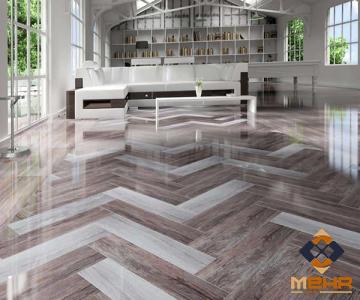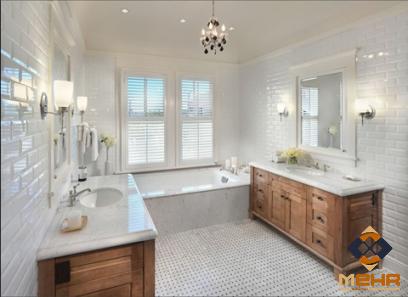As the world of architecture evolves, professionals are continuously seeking innovative materials that not only offer aesthetic appeal but also provide durability and functionality. One such material gaining significant popularity is structural glazed tile. With its unique features and striking appearance, structural glazed tile has become a favorite among architects and designers. In this article, we will explore the key aspects of structural glazed tile and why it is rapidly becoming a preferred choice for modern architectural projects. 1. Unraveling the Concept of Structural Glazed Tile: Structural glazed tile is a versatile product characterized by a glazed surface on one or both sides.

.
 This distinctive glazing not only enhances the material aesthetics but also provides added strength and protection against stains and moisture. The glaze coating is applied during the firing process, resulting in a durable and long-lasting finish that can withstand heavy use. 2. The Advantages of Structural Glazed Tile: a. Aesthetic Appeal: Structural glazed tile is acclaimed for its captivating appearance, making it an ideal option for both interior and exterior applications. With a multitude of colors, finishes, and textures available, architects can create unique and visually appealing designs that enhance the overall ambiance of a space. b. Durability: One of the standout features of structural glazed tile is its exceptional durability. Its glazed surface provides resistance against scratches, stains, and fading caused by prolonged exposure to UV rays. This durability ensures that the material retains its original luster even after years of use.
This distinctive glazing not only enhances the material aesthetics but also provides added strength and protection against stains and moisture. The glaze coating is applied during the firing process, resulting in a durable and long-lasting finish that can withstand heavy use. 2. The Advantages of Structural Glazed Tile: a. Aesthetic Appeal: Structural glazed tile is acclaimed for its captivating appearance, making it an ideal option for both interior and exterior applications. With a multitude of colors, finishes, and textures available, architects can create unique and visually appealing designs that enhance the overall ambiance of a space. b. Durability: One of the standout features of structural glazed tile is its exceptional durability. Its glazed surface provides resistance against scratches, stains, and fading caused by prolonged exposure to UV rays. This durability ensures that the material retains its original luster even after years of use.
..
 c. Low Maintenance: The manufacturing process of structural glazed tile enables it to repel moisture, making it resistant to mold and mildew. Additionally, the glazed surface is easy to clean, requiring minimal maintenance efforts, which is an added advantage for high-traffic commercial spaces. d. Sustainability: With a growing emphasis on sustainable building practices, structural glazed tile offers an eco-friendly alternative. The manufacturing process often utilizes recycled materials, reducing environmental impact while maintaining exceptional quality. 3. Applications of Structural Glazed Tile: Structural glazed tile finds a wide range of applications across various architectural projects, including: a. Exterior Cladding: The versatility and durability of structural glazed tile make it an excellent choice for exterior cladding. It adds a refined and contemporary touch to buildings while protecting the underlying structure from harsh weather conditions.
c. Low Maintenance: The manufacturing process of structural glazed tile enables it to repel moisture, making it resistant to mold and mildew. Additionally, the glazed surface is easy to clean, requiring minimal maintenance efforts, which is an added advantage for high-traffic commercial spaces. d. Sustainability: With a growing emphasis on sustainable building practices, structural glazed tile offers an eco-friendly alternative. The manufacturing process often utilizes recycled materials, reducing environmental impact while maintaining exceptional quality. 3. Applications of Structural Glazed Tile: Structural glazed tile finds a wide range of applications across various architectural projects, including: a. Exterior Cladding: The versatility and durability of structural glazed tile make it an excellent choice for exterior cladding. It adds a refined and contemporary touch to buildings while protecting the underlying structure from harsh weather conditions.
…
 b. Interior Design: From walls to floors and even feature elements, such as accent walls or columns, structural glazed tile can transform interior spaces into visually stunning areas. Its flexibility facilitates the creation of unique patterns and textures that blend seamlessly with any design concept. c. Commercial Spaces: Structures such as hotels, restaurants, and retail stores can benefit from the durability and low maintenance requirements of structural glazed tile. The material’s resistance to stains and moisture makes it an ideal choice for high-traffic areas. Conclusion: With its striking appearance, durability, and versatility, structural glazed tile has emerged as a go-to material for architects and designers seeking to add a touch of sophistication to their projects. Its ability to withstand heavy use and minimal maintenance demands make it a cost-effective solution in the long run. Embracing this innovative material not only elevates the aesthetics of architectural designs but also contributes to sustainable building practices. As the popularity of structural glazed tile continues to rise, we can expect to see more extraordinary applications and designs using this remarkable material in the future.
b. Interior Design: From walls to floors and even feature elements, such as accent walls or columns, structural glazed tile can transform interior spaces into visually stunning areas. Its flexibility facilitates the creation of unique patterns and textures that blend seamlessly with any design concept. c. Commercial Spaces: Structures such as hotels, restaurants, and retail stores can benefit from the durability and low maintenance requirements of structural glazed tile. The material’s resistance to stains and moisture makes it an ideal choice for high-traffic areas. Conclusion: With its striking appearance, durability, and versatility, structural glazed tile has emerged as a go-to material for architects and designers seeking to add a touch of sophistication to their projects. Its ability to withstand heavy use and minimal maintenance demands make it a cost-effective solution in the long run. Embracing this innovative material not only elevates the aesthetics of architectural designs but also contributes to sustainable building practices. As the popularity of structural glazed tile continues to rise, we can expect to see more extraordinary applications and designs using this remarkable material in the future.










Your comment submitted.